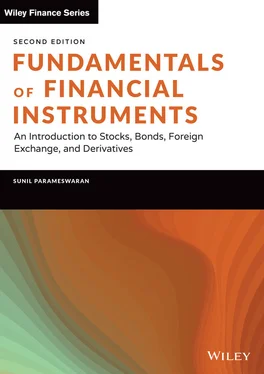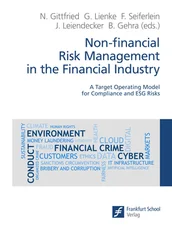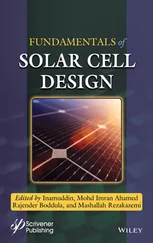Sovereign Risk: Such risk is associated with the structure of foreign economies and governments. Assume that a bank makes a loan to a party in Latin America, which subsequently defaults. In such cases, the lender may not have access to the same legal means of redressal that prevail in the United States. Besides, foreign governments may not be democratically elected or legally accountable. In certain countries, governments may suddenly impose exchange controls for instance, which could preclude a foreign company from repatriating the funds invested by it. It is not only foreign corporate securities that pose such risk; foreign government securities too are risky. There is always a likelihood that a Latin American government, for instance, which has issued bonds denominated in US dollars, may default. Such parties need not default on debt securities denominated in their own currencies, for they have the freedom to print money; however, such countries cannot print foreign currencies like the dollar or the euro.
AFTER THE TRADE – CLEARING AND SETTLEMENT
After a trade has been matched by a trading system, a post-trade process called clearing and settlement needs to commence in order to ensure that the seller receives the cash that is due to him, while the buyer receives the securities that he has acquired.
Clearing refers to all the post-trade processes other than final settlement, where the term settlement refers to the payment of cash to the seller and transfer of ownership of the securities from the seller to the buyer. Settlement is the last step in the post-trade process.
Different security types have different settlement cycles. Money market securities such as negotiable CDs and commercial paper settle for cash , that is on the same business day. Most US Treasury securities settle on the next business day. Most foreign exchange transactions settle for spot , that is two business days after the trade date (T+2 settlement). Equity and municipal bond transactions in the United States settle three business days after the trade date (T+3) settlement.
DEMATERIALIZATION AND THE ROLE OF A DEPOSITORY
A depository is a facility for holding securities in electronic form so that the purchase and sale of shares can take place via a process of book entry. The shares may be either dematerialized or immobilized . The term dematerialization refers to the replacement of physical share certificates by electronic records. On the other hand, if the securities were to be immobilized, an electronic record would be created without destroying the original physical certificates, which would continue to be held in secure storage.
The function of a depository is akin to that of a commercial bank. We will illustrate the similarities with the help of a simple tabular format as shown in Table 1.1.
The benefits of holding securities with a depository in dematerialized form are as follows.
1 It offers a safe and convenient way to hold securities.
2 It facilitates immediate transfers of securities.
3 No stamp duty is payable in most cases when securities are transferred in dematerialized form.
4 Transfer of shares in physical form has certain attendant risks such asBad deliveryFake certificatesDelaysTheftsThese can be eliminated by holding securities in dematerialized form.
5 There is considerable reduction of paperwork involved in the transfer of securities.
6 There is a reduction in the transactions costs involved in securities trading.
7 The concept of lot size has no meaning. Even one share can be bought or sold.
8 Nomination facility is available.
9 A change of address of holders gets registered with all the companies in which they hold securities. This eliminates the need for them to correspond with each company individually.
10 If there is a corporate action such as a stock dividend or a stock split, the shares are automatically credited to the investor's account.
TABLE 1.1Commercial Banks and Depositories (Similarities and Differences)
| Commercial Bank |
Depository |
| Holds funds in an account |
Holds securities in an account |
| Enables fund transfers between accounts after receiving instructions from the account holder |
Enables transfers of securities between accounts after receiving instructions from the account holder |
| Facilitates transfers of funds without having to handle money |
Facilitates transfers of share ownership without having to handle securities |
| Facilitates safekeeping of money |
Facilitates safekeeping of securities |
A custodian bank, a.k.a. a custodian, is a financial institution entrusted with the responsibility of safeguarding the financial assets of an individual or, more commonly, an institutional investor. The custodian typically performs one or more of the following functions:
1 It holds stocks and bonds in safekeeping.
2 It arranges for settlement whenever securities are purchased or sold. In the event of a purchase it ensures that securities are credited and cash is debited, while in the event of a sale it ensures that securities are debited and that cash is credited.
3 It collects dividends on shares and interest on bonds and ensures that the investor's account is credited.
4 It provides information related to the companies whose securities are being held by the investor, such as the schedule of their annual general meetings (AGMs).
5 It provides foreign exchange transactions if required.
Global custodians hold assets for their clients in multiple locations around the globe, using their own local branches or other local custodians. The advantage of employing a global custodian is that a settlement instruction needs to be sent to a single destination. Investors may also opt to use a network of local custodians, one in each financial center where they undertake trades.
If a custodial facility is availed of, the shares will be held in the name of the custodian, with the investor continuing to remain as the beneficial owner of the securities. The advantages of employing the facilities of a custodian may be summarized as follows:
1 It makes it easier and quicker to trade securities, particularly international shares.
2 It simplifies the management and reporting of share transactions. At the end of every financial year, the investor will receive a single consolidated statement giving details of purchases and sales, and any dividend or interest income received during the period.
3 The custodial facility also makes it easier to track the performance of the investor's portfolio.
GLOBALIZATION – THE NEW MANTRA
The word globalization indicates international integration of markets and economies, whereby they become interdependent and interconnected. In today's world, large corporations obtain financing from major money centers around the world in many different currencies to finance their global operations. The major money markets in the world include New York, London, Singapore, and Tokyo. The global nature of operations also forces many corporate treasurers to establish international banking relationships and place short-term funds in several different currencies. The effective management of foreign exchange risk is therefore an integral part of the duties of a modern treasury department. Individual investors too have started investing in the securities of many different countries to take advantage of the better performance potential from internationally diversified portfolios of financial assets.
The integration of financial markets around the world is due to four major factors.
Читать дальше












